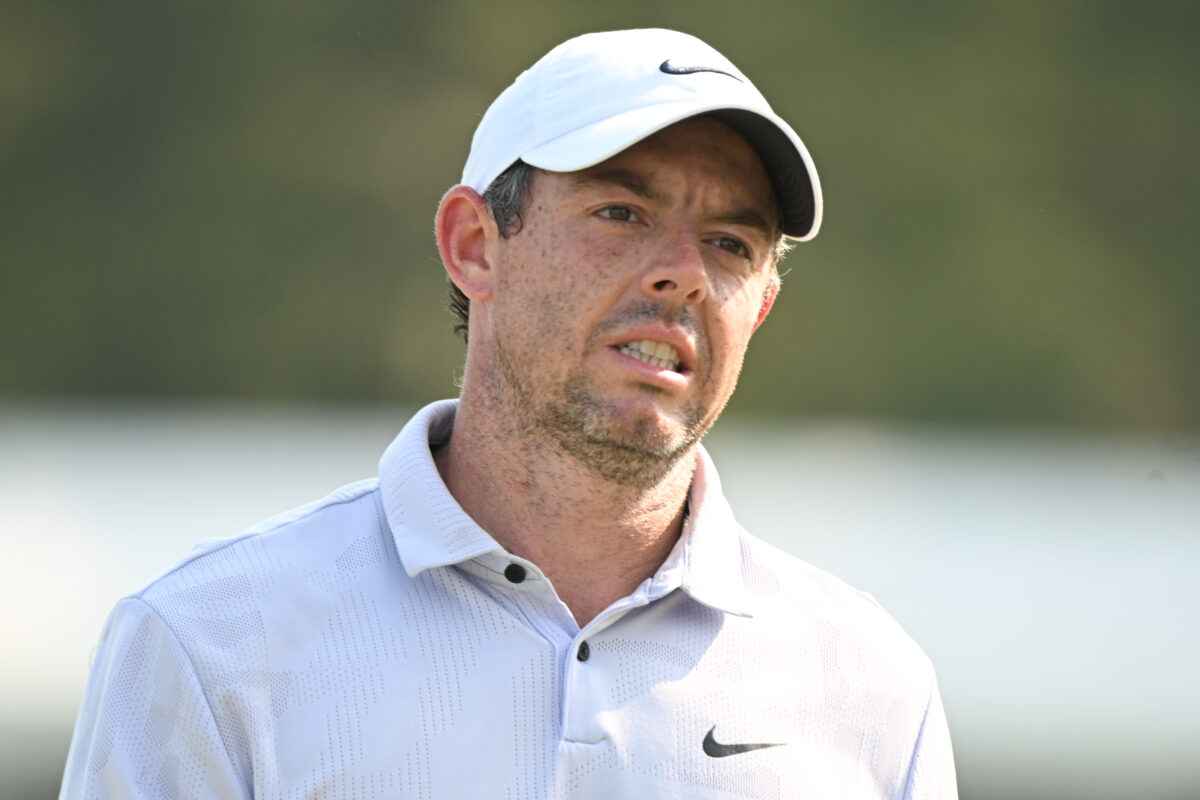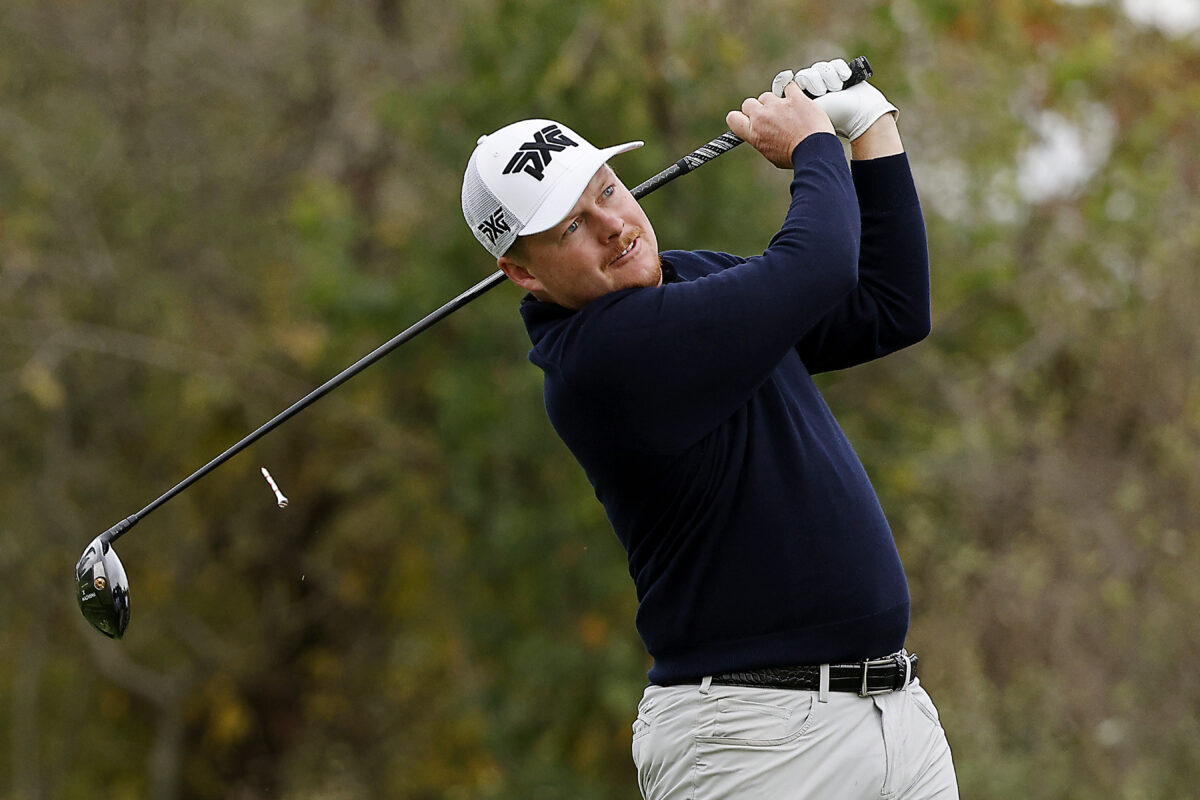How insane was the line Jordan Spieth took during the final hole of Saturday’s third round at the Valero Texas Open?
It was still the talk of the tournament nearly 24 hours later, at least until Denny McCarthy rallied to force a playoff with Akshay Bhatia.
After pulling his drive left through the fairway on the 618-yard par 5, Spieth’s second shot ended up near a drainage ditch in an area. It appeared like he’d punch the ball back into the fairway, but then turned the opposite way and launched a wedge that found a gutter atop the TPC San Antonio clubhouse. The move had social media buzzing.
Spieth wound up making double-bogey after three-putting and he said Sunday that he regretted his decision-making process.

“I should have just hit it left-handed out into the fairway. I thought I could get it — I asked the rules official, he told me there’s no out-of-bounds and that if you could get it up here and you know where it is, then you drop it by the scoreboard, which is better than if I were to hit it lefty up towards the fairway,” Spieth explained. “So I tried. It didn’t come out very good and sure enough I was left with the same kind of situation on the next shot and then I did it. If I didn’t three-putt, I maybe felt like I would have saved a shot, but ultimately I could have just re-teed and made a better score.
“It looks weird. I actually played a really, really solid tee-to-green golf course this week and of course highlighted by a weird hole yesterday that makes it look all crazy. But I was just asking questions and to be honest, if it was out of play here, I probably would have made a better score playing the normal route out. I thought I could finagle a stroke, saving a stroke out of it and it didn’t quite do so.”
Spieth said he did not intend to hit the ball on top of the clubhouse, but merely was trying to advance it far enough for a good drop.
“I just needed to get it far enough up to where I would be close enough to the pin to where my drop would be past the hazard,” Spieth said. “So I had to get it far, but you still had to know where the ball was.”
The former University of Texas star rounded out the week with a 69, putting him into a tie for 10th place on the week at 6 under. He also finished the day with a birdie on 18, avoiding any gutters along the way.
“I had come off two missed cuts so I wanted to kind of find out really where I’m at and really feel like I made progress. I felt like my game’s actually been in a better place than other years and it just hasn’t shown for it in the last six, eight weeks. But I wasn’t exactly sure,” Spieth said. “So I think it proved it this week. A couple mistakes. I played the par 5s over par, which is one of my best stats of the year, and I lost like three around the greens, which is also a strength of mine. So it was a very weird. So if I just do those things normal, I’ve got a chance to win. And there’s always ifs, ands and buts.
“I feel like I came into the week unsure if I was confident in being able to win next week and I think I come out of it saying I’ve got a couple things I’ve got to work on, but overall I think I’m in a good place to be able to have a chance. Mission accomplished in that sense, but I do wish that I didn’t kind of give away a few that I gave away this week.”








